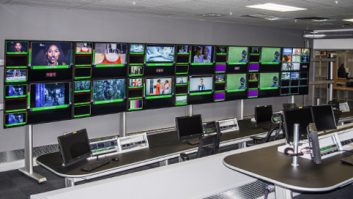Media workflows are changing, never more so than over the past year. This is having an impact on the approach taken by many broadcasters and media companies. Traditionally, many of the larger broadcasters have favoured the approach of building their own bespoke media supply chains to more precisely suit their needs. Are we seeing the end of the custom build approach? How do broadcasters and content providers determine whether to build their own or buy?
Shifting Media Landscape
The media landscape has been evolving rapidly over recent years. The way in which content is consumed has in particular shifted over the past year. A recent report from the Motion Picture Association showed that subscriptions to online video services reached 1.1 billion globally in 2020.
With so much choice and more time spent watching videos, consumers expect more from their entertainment, whether that means more choice, availability on more platforms, or more interaction through AR, voice, social watching etc. At the same time, video quality continues to remain crucial to ensuring a good user experience across all of those. Meeting those demands adds complexity to media workflows, with different versions needed for each platform or language, and an added layer of complexity to enable interaction.
That evolution has not stopped, and the media industry continues to change at a dramatic pace. Solution providers are continually adapting their solutions to meet those new trends. Building your own media workflow that can not only address all of the current needs, but also respond to future changes, can be a significant challenge and requires a great deal of internal expert resources. It also requires those resources to be continually working to adapt those bespoke solutions.
That said, the media workflow industry has become very fragmented, with different tools for every part of the media lifecycle. This means that even buying is not always straightforward and it can be overwhelming to choose the right tool for each part of the chain. That becomes even more challenging if you have to build integrations to make them work together.
Video is Everywhere
The same MPA report showed that the global home/mobile entertainment market reached $68.8 billion in 2020. Consumers have access to more content and more choice than ever before. At the same time, broadcasters are not only competing against each other for subscribers and viewing hours, but also against a whole plethora of video content, especially from social media. Ultimately this means that keeping costs low is key to attracting both subscribers and advertisers.
When it comes to cost, it is also about having the flexibility to spend what you need and reduce the need for massive up-front costs to develop infrastructure. Building your own media workflow requires massive amounts of valuable internal resources which means a big upfront investment. With a buy what you need approach, broadcasters can literally do just that and pick the elements that matter most as and when they need them. This means they can keep costs to a minimum and just as importantly, scale up (or down) as needs change.
Availability of Media-Centric Tools
Perhaps the biggest factor of all is the availability of media-centric tools. Even just a few years ago, the choice was simply not there. This was often why, especially bigger broadcasters, chose to build their own. It was quite simply the only way to get what they needed for their own media workflow. That has changed quite dramatically, with a plethora of media-centric tools on the market. Although, as I mentioned, it can seem complex plugging together lots of different tools, it means that there are tools for every possible media workflow. Broadcasters can still craft something that perfectly suits their own unique needs by plugging those all together.
Many solution providers are aware of this challenge and spend a great deal of their own development time on ensuring tight integrations with other key parts of the media workflow chain. If you can tap into existing integrations, it makes creating that perfect setup all the more achievable. The other thing that has changed is that many more tools are cloud-based and highly scalable. Being able to buy into the tools you need, and scale as needed makes a massive difference to the investment needed.
To Build or To Buy?
The rising complexity, coupled with the increased choice of media-centric tools means that many broadcasters are moving away from building their own solutions. Of course, for some building may still be the better option. Making that decision comes down to asking the right questions before beginning:
- Is my media workflow totally unique?
- Has someone else solved this problem before and is the solution available to buy affordably?
- Can my media workflow needs be met by existing tools?
- Do I have the expertise in house to build my own?
- Is building and maintaining this code a key function of my business?
- How easy is it to build and maintain new features?
- Is using internal resources to build the best use of that expertise?
- Which method is going to enable me to better scale tools as required?
- If I am buying, do those providers offer support if things go wrong?
- Who will support and develop this in the future?
- Does the software I’m considering feature a modern, well documented API?
- How can I respond as the media workflow demands change in the future?
- How quickly do I need everything up and running?
- What’s the TCO, whichever direction I take?
- Can I buy AND build?
For most it will be a case of buying the building blocks then either getting an external resource to build the integrations to create a seamless workflow or using internal resources to do that. Using tools that are already integrated with each other will make that process much simpler and quicker and using cloud-based tools will make it easier to scale as required. Ultimately the decision will come down to getting the media workflow exactly as you need it without costing the earth or compromising quality.






